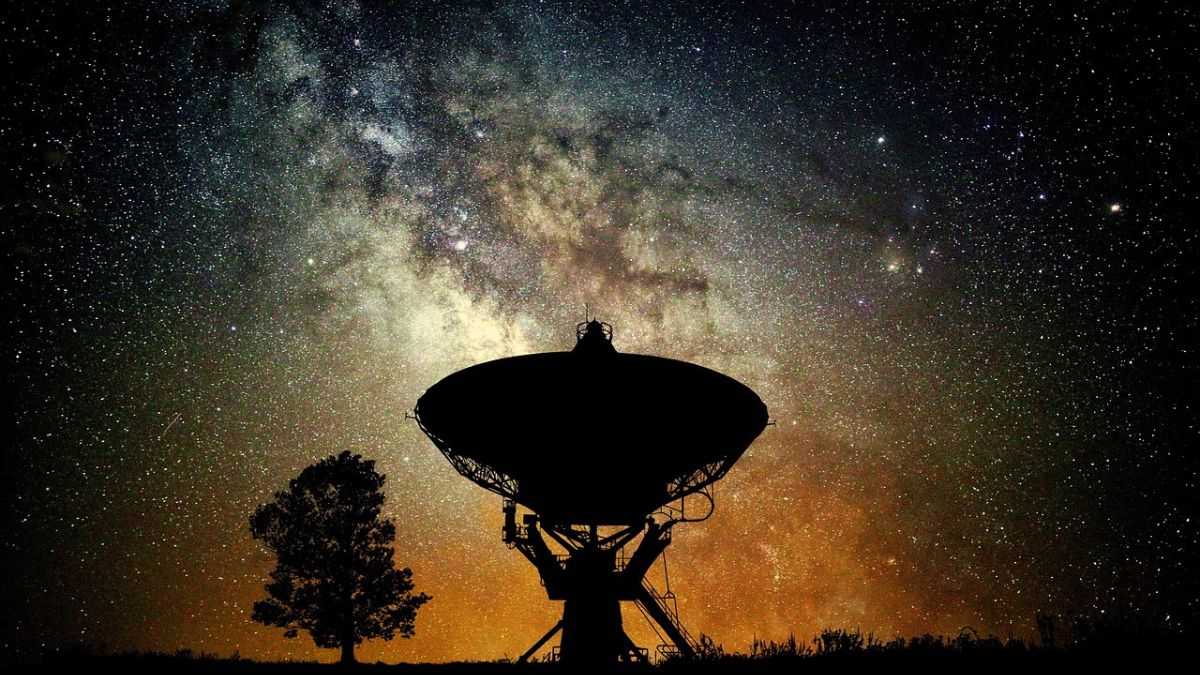Science
China Conquers Space: First an Asteroid, Then a Distant Comet
15 July 2025

Gender denialism is a concept that negates the existence of gender, proposing that it is a choice and that there are more than two genders – sometimes six, sometimes nine, or even more. Gender denialism posits that gender is determined by a vaguely defined identity. How is it possible that within a single concept, individuals believe that gender does not exist, yet simultaneously that there are multiple genders? Does this not seem contradictory? A fundamental characteristic of anti-scientific movements and conspiracy theories is the acceptance of conflicting or inconsistent beliefs. But what is the reality of gender?
Sexual reproduction and gender, divided into producing small, numerous, and motile sex cells called sperm by humans, and large, immotile oocytes, also known as egg cells, evolved around a billion years ago. Biologists and paleontologists debate the precise timing – whether it was 1.2 billion years ago or 2 billion years ago. To put this into perspective, the Earth is about 4.5 billion years old. It is indisputable that there have been and are only two genders, along with hermaphroditism occurring in some species, meaning the presence of both genders in one individual simultaneously or at different times of their life. This phenomenon does not occur in mammals, but is quite common in fish and invertebrates.
At least until the 1990s, the binarity of gender was not seriously questioned. There was no evidence to suggest that there could be more than two genders. Asserting the contrary was considered ludicrous, as there was no evidence for the existence of a third or subsequent genders. Only in fungi and some protists, where isogamy occurs, meaning there is no differentiation between sperm and oocytes in sex cells, do numerous gamete pairing systems exist, but these systems do not constitute gender. Since fungi and protists are not human, it is difficult to apply this knowledge to ourselves.
Towards the end of the 20th century, something began to change. Certain humanists started to identify additional genders. Initially, they referred to these as genders, meaning vaguely defined gender identities that could just as easily be categorized under cultural or subcultural identities. However, about a decade ago, these humanists, adhering to postmodernism, began to replace the real phenomenon of gender with constructs such as genderfluid, xenogenderism, male pride in a female body, soul gender, etc. By 2020, according to this discourse, there were at least a dozen genders, and now there are dozens more.

More than once, when someone claimed there were multiple genders, I asked if they could list and describe them. Most would fall silent, but a few tried to respond. “Klinefelter syndrome,” they said. “Swyer syndrome,” added others. As a biologist, I immediately knew they were completely misunderstanding the concept.
Klinefelter syndrome, Swyer syndrome, Turner syndrome, supermale or superfemale syndrome, androgen insensitivity syndrome, and others in this category are disorders of sex development, or developmental defects. They affect sexual (and other) characteristics due to genetic aberrations. To claim they represent additional genders is as absurd as saying a person with Down syndrome is a different species of human, or someone with developmental bone disorders is an alien. A woman with a sex development disorder is a woman with a disrupted sex development, not a representative of a third or fourth gender. The same goes for men with disrupted sex development.
From conversations with individuals with these disorders, I know they are very displeased with their conditions being used in the rhetoric of trans activism. They do not see themselves as additional genders. Just as some people are born with a defect or develop abnormally post-birth in aspects such as bones, muscles, or liver, others experience this in relation to their gender. However, this does not make them representatives of a third gender, just as the disorders of the former do not make them a new species of Homo.
What about transsexualism? It is a gender identity disorder. “The most severe,” according to the academic textbook Sexology edited by Prof. Lew-Starowicz, published by PZWL scientific publishing house in 2020. Individuals with gender dysphoria, or a sense of rejection of their gender and body, are men or women with disrupted gender identification, not representatives of a third or fourth gender. The entire discourse on multiple genders or a gender spectrum is based on profound misinformation, without an understanding of the basics of genetics, embryology, physiology, psychology, and sexology.
How is it that a man or boy can consider themselves a woman, and a woman or girl as a man? There are several reasons leading to the adoption of a transsexual or non-binary identity. This is highlighted by sexologist Prof. Ray Blanchard and other specialists, who reference studies on the subject.
We recommend: Łukasz Sakowski: “As a biologist, I assure you that there is no ‘brain gender.’”
Firstly, it is a response to a lack of self-acceptance regarding evident homosexual orientation. Gays and lesbians post-transition function as heterosexual individuals. A gay person post-transition is perceived socially as a heterosexual woman, and a lesbian as a heterosexual man. Thus, gender change often acts as nothing more than a form of conversion therapy for homosexuality. It offers a solution for homophobes who mask their deeply ingrained prejudices with “tolerance” towards transsexuals and gender change.
I found myself in such a situation. At 13, I denied my homosexual orientation and convinced myself that I was a “trans woman.” This was under the influence of manipulation and persuasion by an adult transsexual I met online, who convinced me to transition and that being gay was wrong. This motivation for changing gender likely affects gays more often, as societal intolerance is usually stronger against us than against lesbians. Numerous studies, published from the 1970s through to 2023, have shown not only that most individuals outgrow gender dysphoria but also that the majority will be gay or lesbian in adulthood.
Meanwhile, activists distribute materials claiming that the brains of trans individuals differ from those of non-transsexuals, arguing that transsexuality can be empirically proven and is potentially innate. However, aside from the poor methodology of such studies, including the failure to study these individuals’ brains longitudinally – from birth to death – similar or the same differences are also seen in gays and lesbians. This strengthens the hypothesis that trans individuals are often simply gays and lesbians, poorly guided in life or lost in terms of identity, socially or psychologically.
In the case of heterosexual men, the desire to change gender is most often motivated by transvestism, meaning sexual arousal at the thought of functioning as a woman. This arousal can be traditionally transvestitic – an attraction to wearing women’s clothing – or it can be autogynephilia, arousal at the thought of having sex with oneself as a woman. Supposedly, during sex, such a man identifies as both a woman and the man with whom he is copulating. Moreover, some heterosexuals choose to function as “lesbians” because they have consumed pornography and, instead of living their own lives, try to enact scenarios from extreme lesbian porn movies.
Thirdly, what seems most common among heterosexual and homosexual women are sexual traumas. There is a group of women who, after molestation or rape, begin to deny their gender because they psychologically cannot confront such events and the horrific memories. Personally, I know of two such stories.
Mental disorders also contribute frequently to gender identity disorders. Studies show that among trans and non-binary individuals, the following mental disorders often co-occur: borderline personality disorder, narcissistic personality disorder, bipolar disorder, clinical depression, schizophrenia or autism, anxiety disorders, obsessive-compulsive disorders, and dysmorphophobia – obsessive thoughts about having an ugly and asymmetrical body or that its parts do not match the rest. Individuals with these disorders, unable to cope with them, familial, and social issues, create a false defensive identity to psychologically detach from problems and maintain functioning in denial, disavowal, and dissociation. In the past, such individuals joined cults, conspiracy theory groups, claimed UFO abductions, or convinced themselves and others they were possessed. Now, believing oneself to be transgender or non-binary offers a simple escape from reality for such individuals.
We recommend: Is gender play fair play? When do trans athletes have an advantage?
What led to the perception of clear mental and sexual disorders as norms, and why has bodily mutilation through hormonal blockers, hormones of the opposite sex, and genital surgeries come to be viewed not as indulging in the toxic fantasies of troubled individuals but as offering them help? Enter postmodernist relativism. Indeed, the concepts of disorders or diseases, especially in psychiatry, are partially relative. It is challenging to draw a firm line or determine the point at which we transition from having borderline personality traits (an above-average intensity of borderline features but not enough to constitute a personality disorder) to a full-blown borderline personality disorder, from displaying subtle autistic traits to full-blown autism.
Postmodernist relativism has pushed these relative boundaries to the level of absurdity. Not just the boundaries of mental disorders, but also the concept of gender itself. Postmodernists have replaced the empirical, objective concept of gender with the abstract concept of gender identity, which is difficult to define concretely and impossible to verify objectively. Henceforth, facts became irrelevant, and subjective claims and unverifiable declarations took on significance.
While this is undoubtedly troublesome and destructive for society – since few things undermine the integration of Western societies like postmodernist relativism – such an approach also harms the disordered individuals themselves. Those undergoing gender transition not only fail to help themselves but also damage their mental and physical health and degrade their family and social relationships. Puberty blockers and opposite-sex hormones cause depression and anxiety disorders, damage the liver and kidneys, lead to osteopenia or osteoporosis, and increase the risk of benign and malignant tumors in the liver or brain. They also harm the cardiovascular system. All these effects do not occur immediately but months or years after gender transition, which entails a lifetime of taking opposite-sex hormones. Puberty blockers are used until the surgical removal of gonads – which, by the way, creates pressure to quickly remove testes or ovaries to stop taking these highly toxic substances. I also felt such pressure, but fortunately, instead of proceeding with orchidectomy, I decided to reconsider my life and abandon the gender change.
Gender transition may temporarily alleviate the psychological pain stemming from self-rejection or disorders like borderline personality or narcissism, but the excitement associated with the change and starting a new life fades after a few years, and old problems return. Thus, the percentage of individuals opting to reverse their gender transition is dramatically increasing, already reaching 30% in some studies. And these studies only account for individuals officially registered in courts and offices as changing their gender, while most withdraw from gender transition without prior notification to state institutions, meaning they do not appear in statistics. Therefore, the real percentage of detransitioning is, by force of mathematics, significantly higher.

When Western countries began to allow minors to change their gender, a phenomenon of social contagion, colloquially known as a trend, entered the scene. Research clearly shows that among today’s teenagers, the youngest demographic group studied, social contagion of gender dysphoria and transsexualism plays a significant role in the boom of transgenderism and non-binary identities. This trend promotes the view that being trans is attractive and grants various minority privileges, suggesting it is beneficial to be trans. The existence of this phenomenon, known as social gender dysphoria or rapid onset gender dysphoria, has been confirmed by scientific studies from American, British, and Swedish researchers, as well as the French Medical Academy. This issue has also been reported by the University Hospital in Ghent and the Gregorio Marañón Hospital in Madrid.
This phenomenon is strongly reinforced by celebrities, influencers, and trans activists attempting to reshape reality by portraying transsexualism and gender transition as cool and positive. My own idea to change gender did not originate from within. Initially, I learned about it from television, and then, at around 13 years old, an adult transsexual convinced me that it was worthwhile to be trans. Online materials from trans activists, encouraging identification as trans, also play a significant role.
Denying gender and the entire movement of gender denialists, now influential in some media, activist organizations, and the humanistic part of academia, forms the ideological foundation for a deranged flight from reality. It is an intellectual facade designed to sustain illusions.
The fact that trans activists so aggressively pursue gender changes for children stems from their easier maintenance of their denial, disavowal, and dissociation. “If even children are changing their gender, it means my own gender change was correct,” is the underlying thought. In this way, they distance themselves from sincere thought and authentic reflection on the harm they have done to their bodies, undermined family and social relationships, and potentially destroyed part or all of their lives.


Science
13 July 2025

Zmień tryb na ciemny